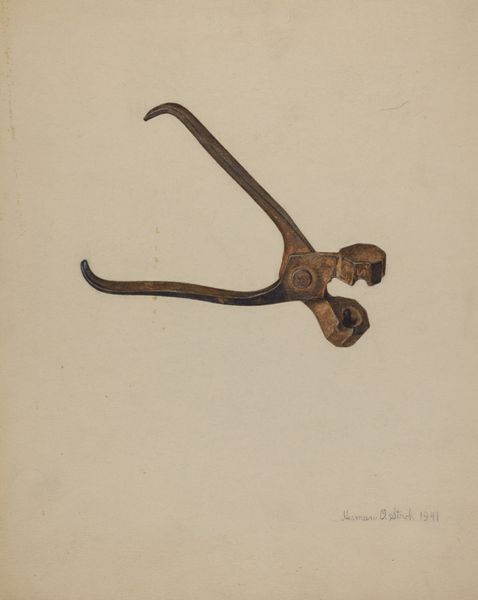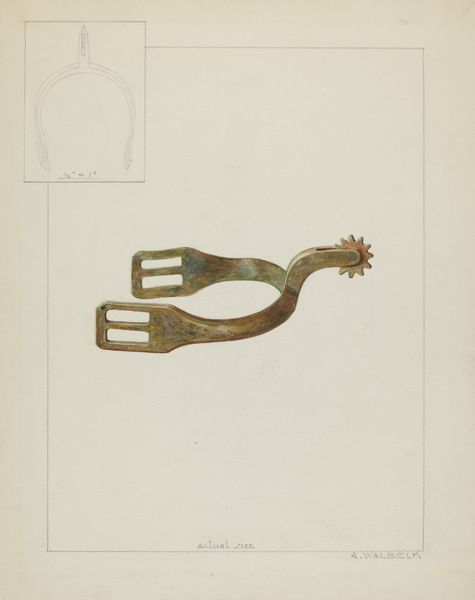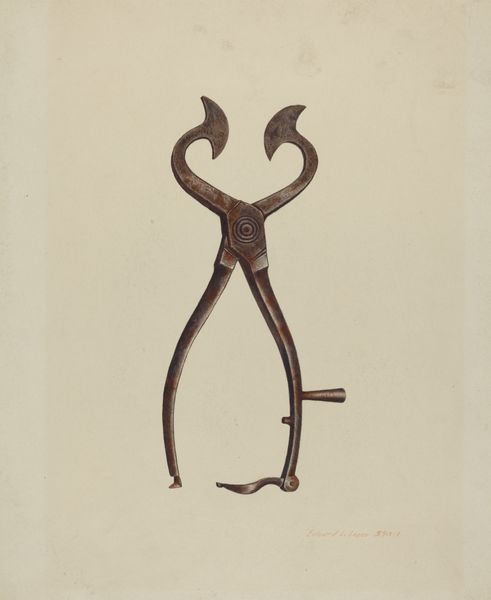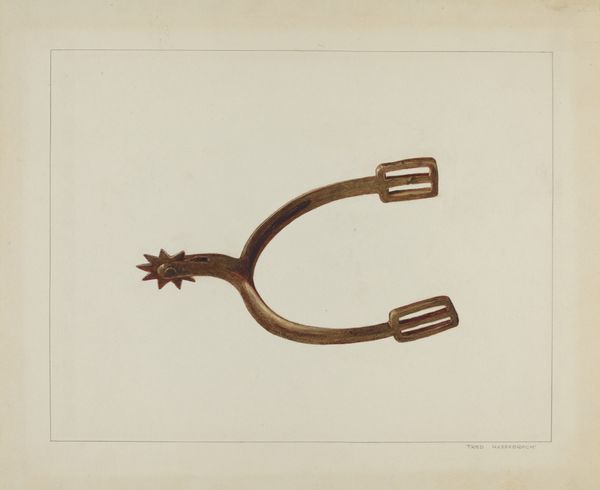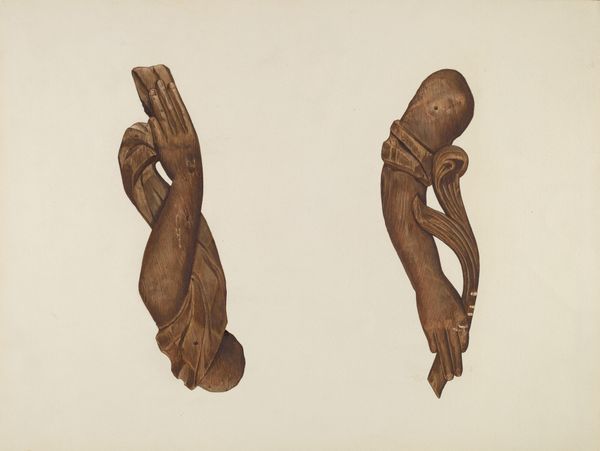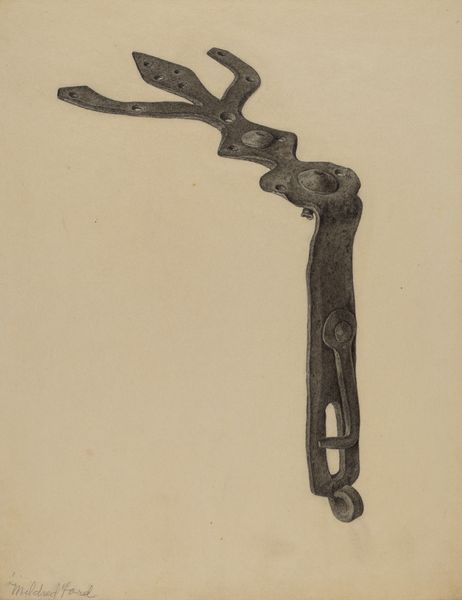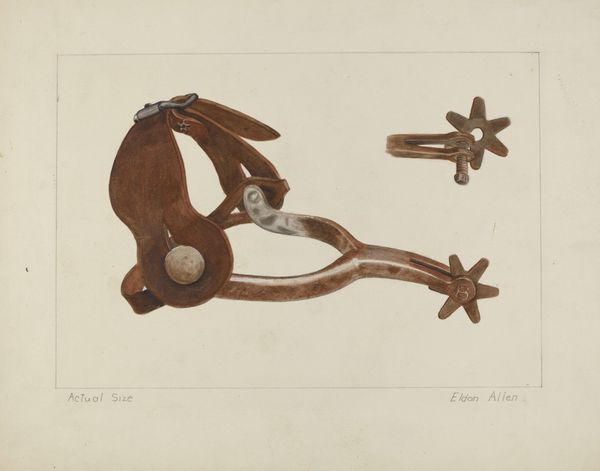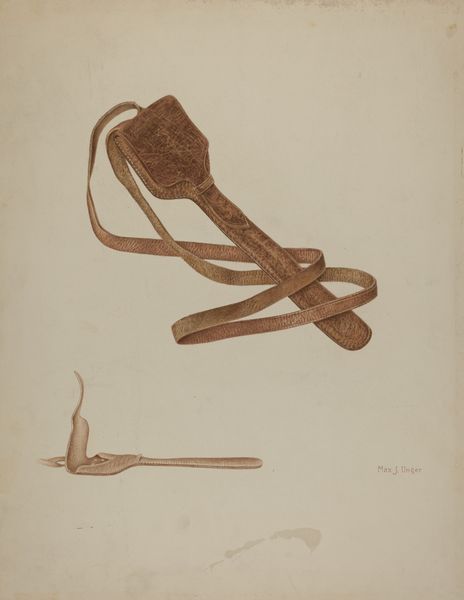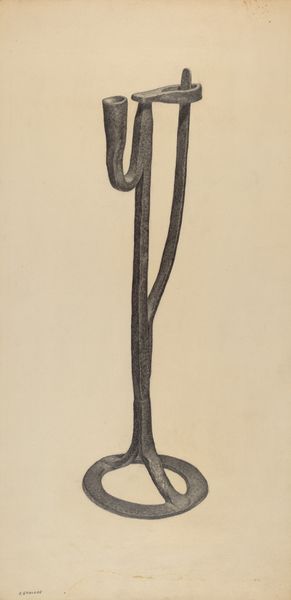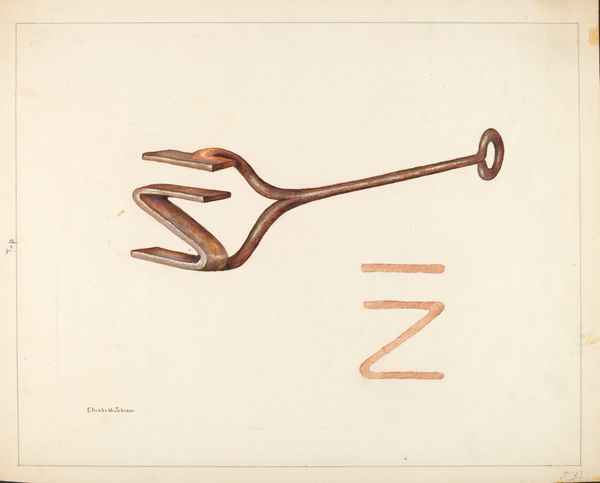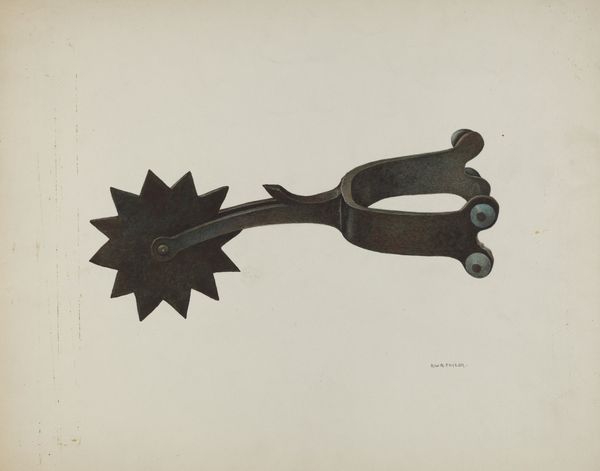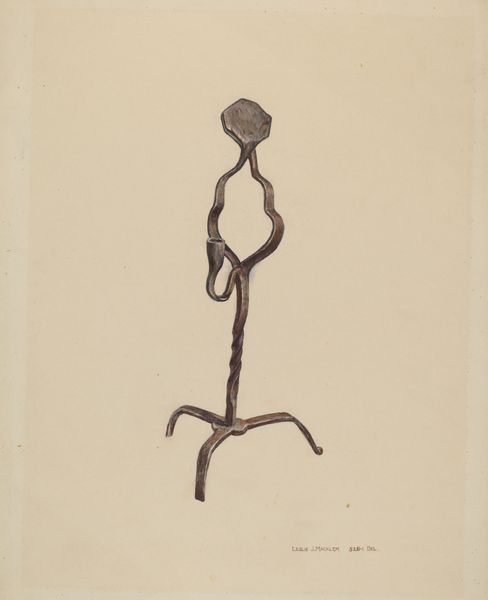
drawing, watercolor
#
drawing
#
watercolor
#
watercolour illustration
#
realism
Dimensions: overall: 27.9 x 22.9 cm (11 x 9 in.) Original IAD Object: 5" long; 3/4" wide
Copyright: National Gallery of Art: CC0 1.0
Curator: Looking at Manuel G. Runyan's circa 1938 watercolour drawing, "Bullet Mold," I am struck by how an object so utilitarian can be imbued with a quiet grace. What are your initial impressions? Editor: Immediately, a feeling of tension. That weathered, metallic surface seems heavy, even threatening, set starkly against the emptiness of the background. It makes you think about creation and destruction. Curator: It's a tool of war, yes, but rendered in a surprisingly soft manner, almost like a relic or talisman. Note the deliberate curves, the subtle play of light across its surface. These implements often take on symbolic importance that transcend their immediate use, serving almost as icons of power, violence, or protection. Editor: Power definitely comes to mind. Think about the context—late 1930s, pre-World War II. The artist is making a statement, maybe about impending conflict, the everyday objects of violence becoming almost romanticized by the aesthetic rendering? Curator: Perhaps he recognized how these tools, through necessity and widespread use, enter the cultural memory. They acquire their own gravity. It evokes complex responses: fear, necessity, a connection to ancestors. After all, bullets made by tools like these have had profound consequences across cultures. Editor: Precisely. And even without specific historical knowledge, one gets the feeling that this object represents a very real and embodied type of power. The shadow hints at a sinister subtext. Consider, too, the power dynamic of the person wielding this mold versus who faces the bullets. The drawing highlights that disparity, almost passively acknowledging inequality. Curator: That element of violence also seems at odds with the inherent artistry with how Runyan painted. He isn't shying away from beauty or representation of cultural values despite showing us the darker aspect of society through mundane tools like these molds. Editor: Indeed. I wonder, too, what statements were aimed for in that time period of art and sociopolitical discourse. This piece might spark very fruitful dialogs in class, with its focus on war machinery from before an iconic and traumatizing global event. Curator: Runyan seems to acknowledge that very fact here. Editor: Yes, quite impactful when you unpack its social dimension.
Comments
No comments
Be the first to comment and join the conversation on the ultimate creative platform.

